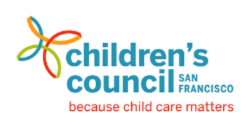Topics
Choosing Child CareFamilies' RightsFamily & Community EngagementFinancial AssistanceLicensing & SafetyParenting & Child DevelopmentProvider ResourcesResource & ReferralSpecial NeedsPotty training is an important milestone in a child’s life. Parents and child care providers must work as a team in order to ensure a successful and healthy transition. By law, licensed infant centers and parents must agree on a written plan for potty training. This plan does not have to include the use of diapers such as Pull-Ups.
The plan must include:
- Toilet training methods, such as the use of rewards, the language being used, and the hygiene routines the child learns to follow.
- The use of training equipment. This includes the type of toilet used and the rewards (if any) that are given.
- The clothing used. This may include loose fitting, easy up-down clothing such as elastic waistband pants and pullover shirts (not onesies).
In addition, all child care center staff must have ready access to the toilet-training plan for all children in their care.
To begin toilet training while your child is in daycare:
- Make sure your child is comfortable with the child care situation. If your child is fine at home, but stressed while in daycare, potty training will take longer and be more frustrating.
- Make a plan. Consult with your child care provider and create a toileting plan you can both agree on.
- Dress for easy clothing removal. Children should be able to easily remove their clothing themselves. Stick to elastic waistband pants and pullover shirts (not onesies) for potty training.
- Send extra clothes. Accidents happen. Make sure your child is prepared with one or two extra outfits—and extra underwear—every day.
- Use the same toilet training methods at home that will be used in the center. Your child will toilet train much faster if there is consistency.
- Check in with both your child and your care provider. Successful potty training requires communication. Ask for a daily report from your child care provider. At home, ask your child how they felt things went that day. Provide encouragement and support.
When seeking a family child care home or other type of child care setting, make sure to talk about toilet training using the guidelines above.
Sources:
https://www.verywellfamily.com/how-to-potty-train-a-child-in-daycare-616859
https://www.brighthorizons.com/family-resources/potty-training-in-daycare
https://godiaperfree.com/successful-potty-training-with-your-daycare/
https://www.law.cornell.edu/regulations/california/22-CCR-101428
https://cchp.ucsf.edu/sites/g/files/tkssra181/f/toiletlearnen070204_adr.pdf
Was this article helpful?
Similar Resources
Families’ Rights in Choosing Child Care
In California, parents have the right to make the best child care choices for their family. Parents have many options:...Child Care Resource and Referral Agencies (CCR&Rs)
What is a CCR&R? Child care resource and referral agencies (CCR&Rs) serve families, child care providers and the...Licensing and Monitoring for Child Care Facilities in California
Community Care Licensing Information The Department of Social Services, Community Care Licensing (CCL) licenses and moni...Log into your account
Don't have an account? Sign up
Sign up to save your own provider lists
Already have an account? Log in
Create an account with Email Address | Phone Number

